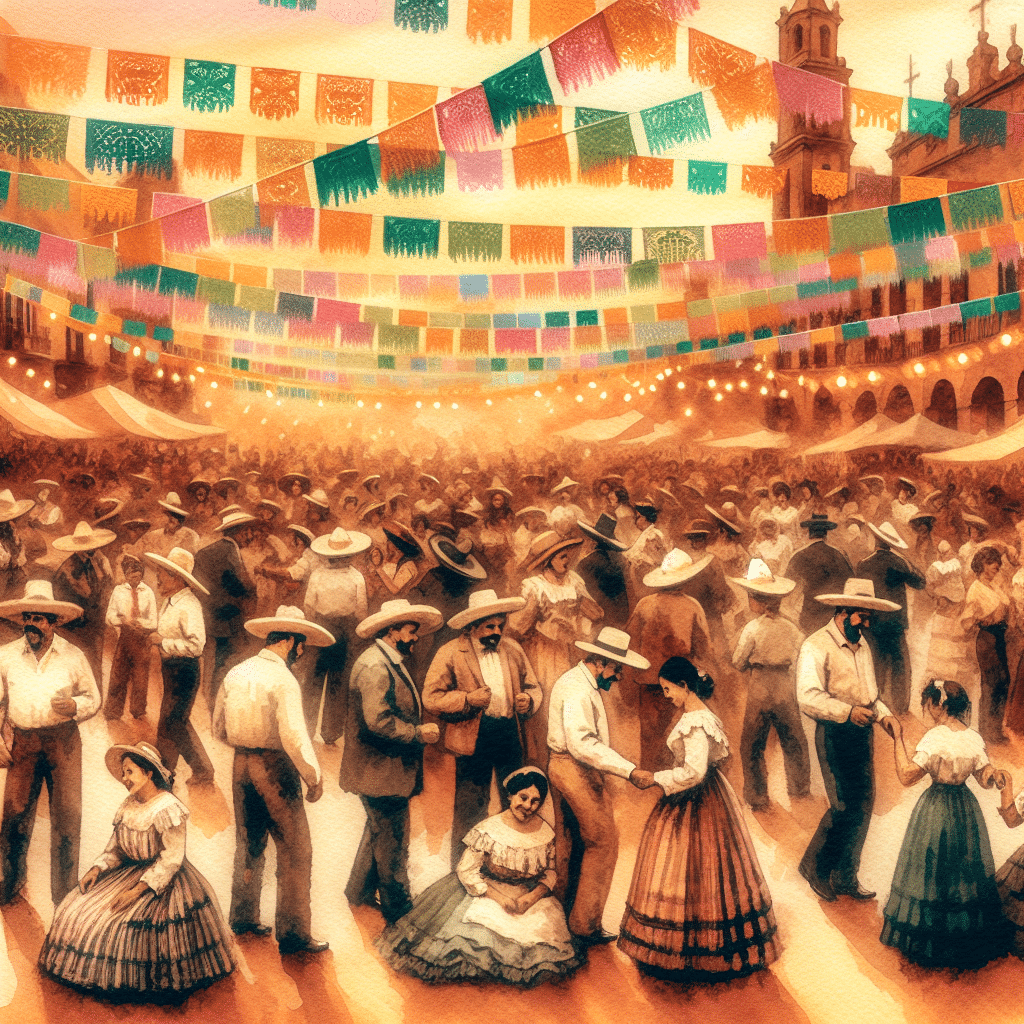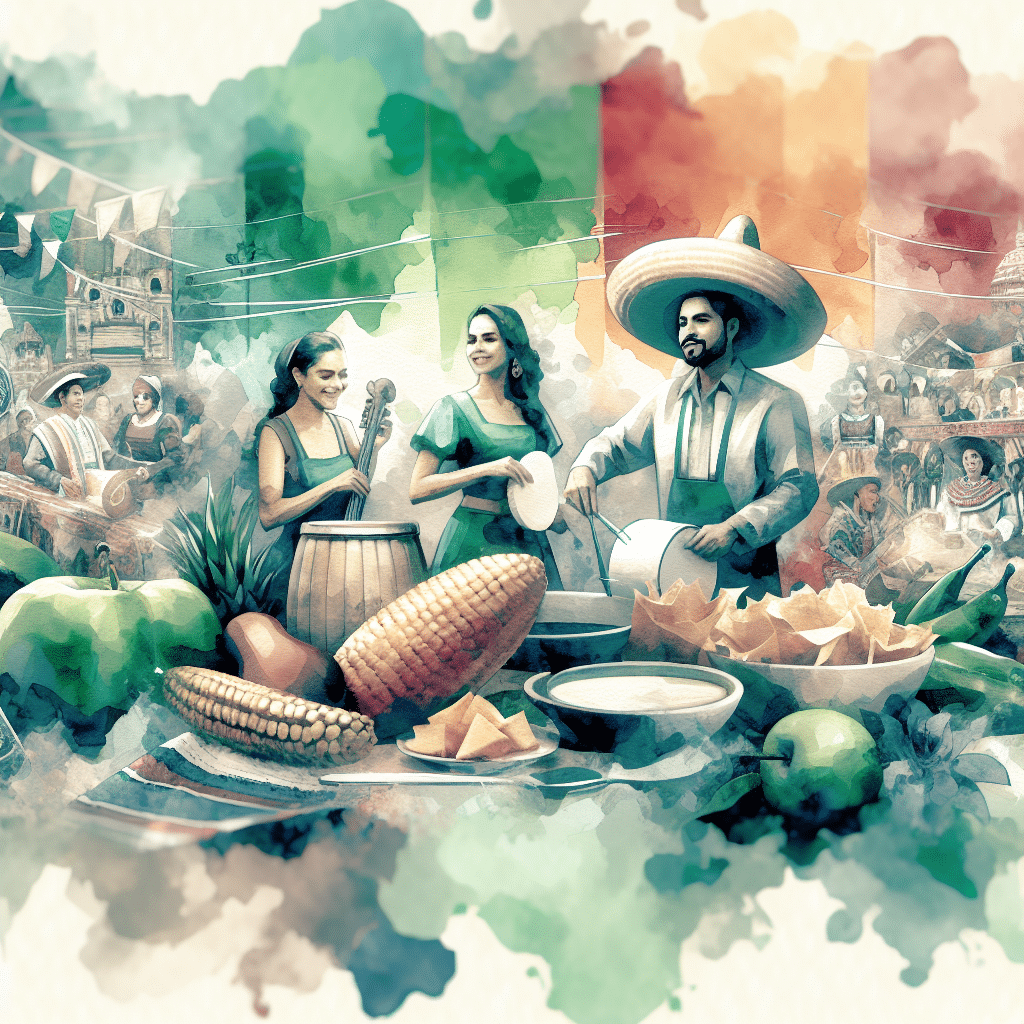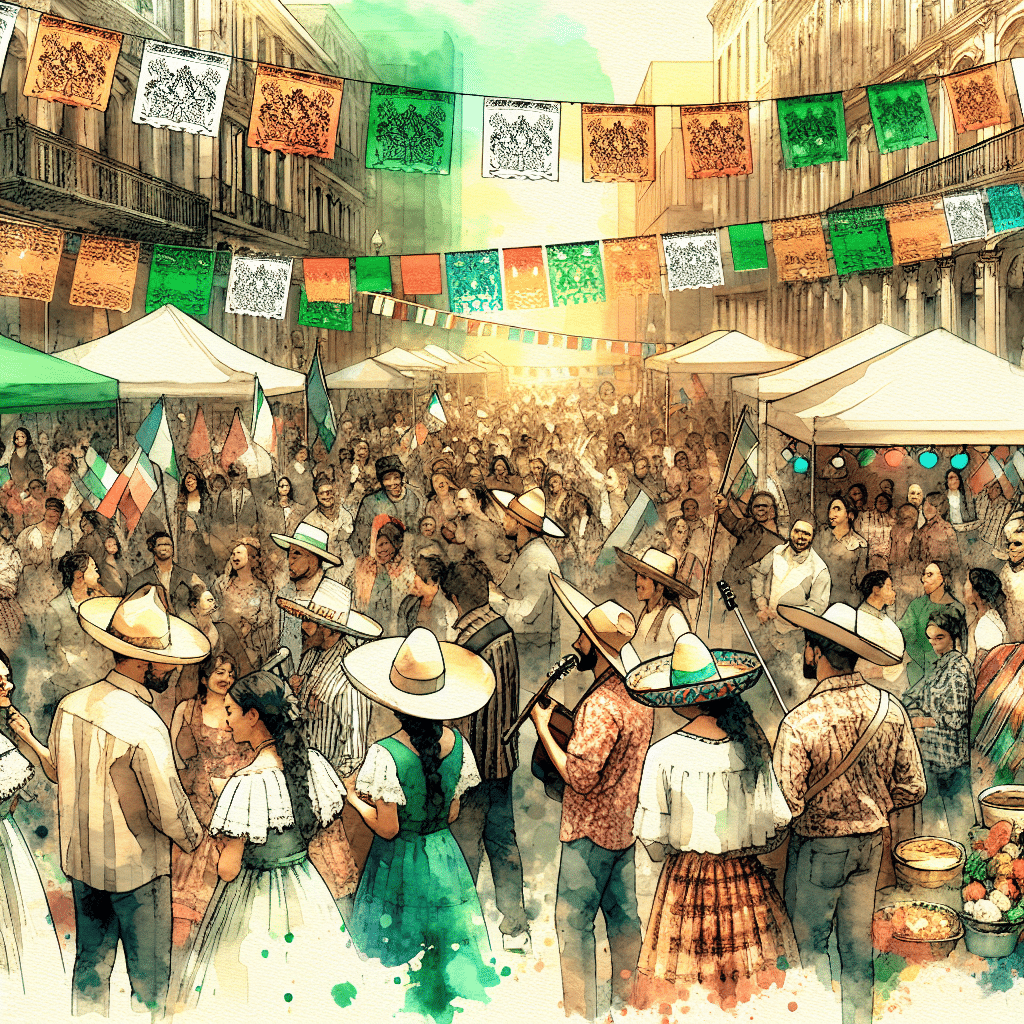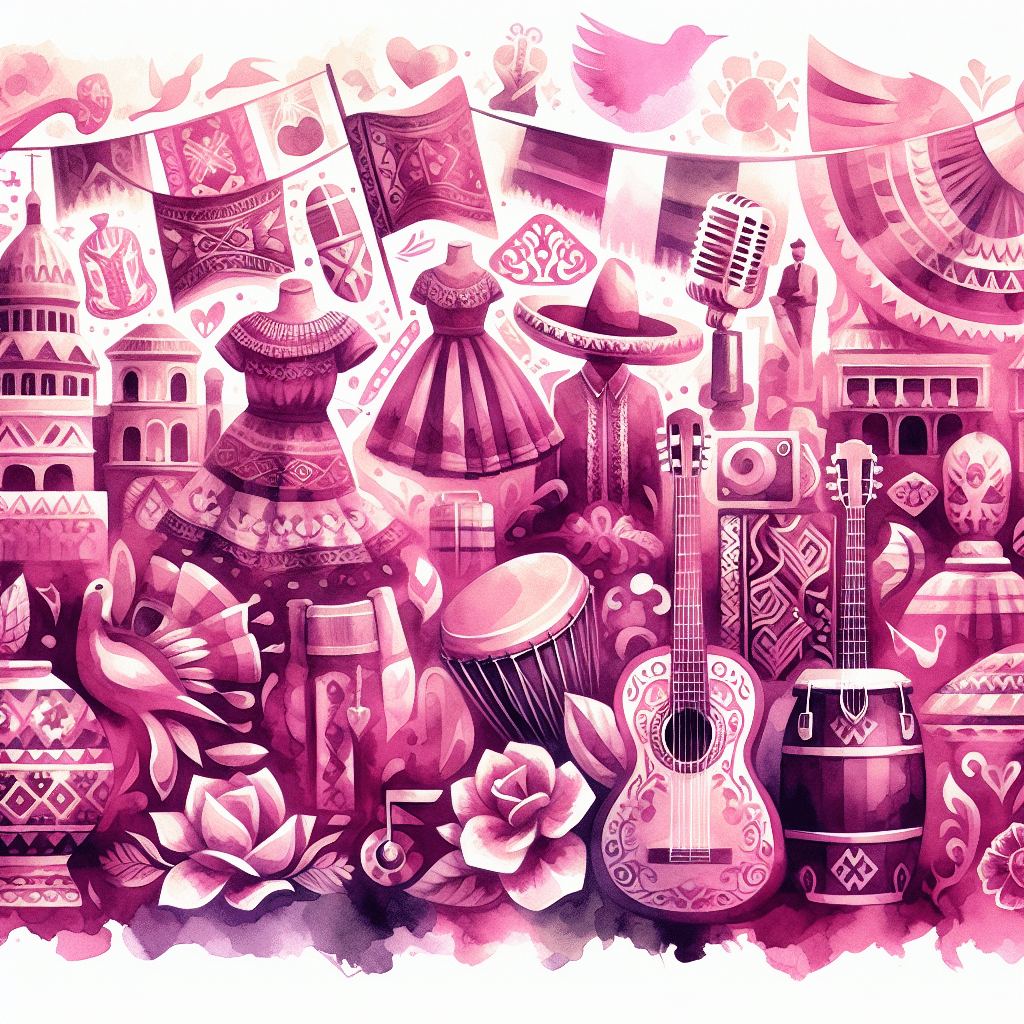
Celebrating Hispanic Heritage Month: History, Culture, and Impact
Celebrating Hispanic Heritage Month
History and Significance
Hispanic Heritage Month is a month-long celebration of Latino culture, running from September 15 to October 15 every year. It all started as a week-long event in 1968, thanks to President Johnson. Then, in 1988, President Reagan decided a week just wasn’t enough and extended it to a full month (Smithsonian Latino Center).
The timing is spot-on, coinciding with the independence days of several Central American countries. On September 15, Costa Rica, El Salvador, Guatemala, Honduras, and Nicaragua all celebrate their independence. Mexico and Chile join the festivities on September 16 and September 18, respectively.
Growth and Impact of the Latino Community
The Latino community in the United States is not just growing; it’s thriving. According to the U.S. Census Bureau, there are over 60 million Latinos in the country today, making up 18.9% of the total population (Smithsonian Latino Center). That’s a lot of salsa dancers, taco lovers, and reggaeton fans!
But it’s not just about the numbers. The Latino community is making waves across various sectors, from business and politics to arts and entertainment. If the American Latino community were an independent country, its economic output would rank fifth in the world. That’s some serious influence (Smithsonian Latino Center).
Representation matters, especially when one in every four children in the United States is Hispanic/Latino, according to 2020 data (Smithsonian Latino Center). However, Latino history is often missing from high school textbooks. Despite this, the resilience and determination of the Hispanic community continue to shine through.
| Statistic | Data |
|---|---|
| Latino Population in the U.S. | Over 60 million |
| Percentage of Total U.S. Population | 18.9% |
| Economic Output Rank (if independent) | 5th in the world |
| Percentage of Latino Children in U.S. | 25% |
Hispanic Heritage Month is more than just a celebration; it’s a tribute to the vibrant culture, rich history, and significant contributions of the Latino community. For more on how these celebrations unfold, check out our sections on latino cultural events and traditional latino dances.
Festivities and Events
Latino community celebrations are a burst of color and energy. Hispanic Heritage Month is the perfect time to dive into this lively culture with concerts, parades, art exhibits, and special events that celebrate the rich heritage of the Latino community.
Concerts, Parades, and Festivals
Concerts, parades, and festivals are the lifeblood of Latino celebrations. These events bring the music, dance, and art of Latino culture to the forefront. From salsa to reggaeton, the beats fill the air, and the streets buzz with parades and festivals.
In big cities, you’ll find grand parades for Hispanic Heritage Month. These parades are a riot of color with floats, traditional costumes, and high-energy performances showcasing the diverse Latino cultures. It’s like a fiesta on steroids!
Concerts this month feature both legendary artists and fresh faces in the Latino music scene. Whether it’s a free outdoor concert or a ticketed indoor event, expect to groove to salsa, merengue, bachata, and more. For a curated musical experience, check out the special playlist dedicated to Hispanic Heritage Month at Hacienda Colorado.
Art Exhibits and Special Celebrations
Art exhibits and special celebrations are also key to Hispanic Heritage Month. Museums and galleries host exhibitions featuring Latino artists, showcasing their contributions to the art world. These exhibits often include paintings, sculptures, photography, and multimedia installations that reflect the rich cultural heritage and contemporary expressions of the Latino community.
Special celebrations might include traditional dance performances, food events, and cultural workshops. These events offer a deeper dive into Latino traditions and customs, letting participants engage with the culture in a meaningful way.
| Event Type | Description |
|---|---|
| Parades | Colorful processions with traditional costumes, floats, and performances |
| Concerts | Live music events featuring Latino genres like salsa, merengue, and reggaeton |
| Festivals | Community gatherings with food, music, dance, and cultural activities |
| Art Exhibits | Displays of artwork by Latino artists, including paintings, sculptures, and multimedia installations |
| Special Celebrations | Traditional dances, culinary events, and cultural workshops |
For more on these vibrant festivities, visit our pages on latino cultural events and latino film festivals.
These festivities and events not only celebrate the heritage and contributions of the Latino community but also bring people together. So, whether you’re dancing to a salsa beat or admiring a powerful piece of art, there are plenty of ways to soak up the vibrant spirit of Latino celebrations during Hispanic Heritage Month.
Influential Figures in Latino Culture
Latino celebrations are a burst of color and energy, thanks to the trailblazers who’ve shaped music, dance, sports, and more. Let’s shine a light on some of these legends.
Ballet Hispánico and Tina Ramirez
Tina Ramirez, a powerhouse dancer and choreographer with Puerto Rican and Mexican roots, started Ballet Hispánico in 1970. Her goal? To celebrate Latino culture through dance. Ramirez’s incredible work earned her the National Medal of Arts (Smithsonian Latino Center).
Ballet Hispánico has become a cultural gem, blending traditional and modern dance styles. They’ve wowed audiences worldwide with performances that mix ballet, modern dance, and Latino traditions. Curious about more Latino arts? Check out latino cultural events.
Celia Cruz and Salsa Music
You can’t talk about Latino culture without mentioning Celia Cruz, the unstoppable Queen of Salsa. Cruz brought salsa music to the U.S. in the ’60s and ’70s, becoming a cultural icon during the Civil Rights movement.
Salsa, a mix of Cuban and Afro-Latino beats, found its groove in New York and spread like wildfire. Celia Cruz’s famous shout “¡Azúcar!” became a symbol of her electrifying performances. Want to know more about influential Latinos? Visit famous hispanic americans.
Latino Athletes and Artists
Latino athletes have changed the game in American sports, especially baseball. For decades, they’ve built communities and reshaped American culture. Today, Major League Baseball is packed with Latino stars like Francisco Lindor and José Altuve (Smithsonian Latino Center).
| Player Name | Team | Position |
|---|---|---|
| Francisco Lindor | New York Mets | Shortstop |
| José Altuve | Houston Astros | Second Baseman |
These players aren’t just athletes; they’re role models, inspiring young Latinos to chase their dreams. For more on Latino contributions, explore latino heritage month.
Latino artists have also left their mark. From painters to musicians, their work enriches American culture. Think of Diego Rivera’s murals or Carlos Santana’s music. To dive deeper into these artistic contributions, check out hispanic culture and traditions.
These influential figures show us the richness of Latino culture and the huge impact Latinos have had in various fields. Their legacies continue to inspire and shape our world.
Hispanic Heritage Month Celebrations
Diverse Cultural Celebrations
Hispanic Heritage Month, running from September 15 to October 15, is a lively time when the Latino community comes together to celebrate their rich heritage and contributions. It started as a week-long event in 1968, thanks to President Johnson, and was extended to a month by President Reagan in 1988. This period is jam-packed with colorful events and activities (Smithsonian Latino Center).
Cities across the U.S. buzz with excitement during Hispanic Heritage Month. From energetic concerts and lively parades to engaging festivals and thought-provoking art exhibits, there’s something for everyone. These celebrations often coincide with the independence days of several Central American countries, including Costa Rica, El Salvador, Guatemala, Honduras, and Nicaragua, all celebrating their independence on September 15 (Smithsonian Latino Center).
For pop culture enthusiasts, awards shows that honor the accomplishments of Latinas and Latinos are a highlight. These events not only celebrate artistic achievements but also spotlight the resilience and determination of the Hispanic community.
For a closer look at the festivities, check out our guide on Hispanic Heritage Month activities.
Contributions to American Society
The Latino community’s impact on American society is profound and far-reaching. One in every four children in the United States is Hispanic/Latino, yet Latino history is often overlooked in high school textbooks (Smithsonian Latino Center). Hispanic Heritage Month is a time to correct this oversight and acknowledge the significant contributions of Latinos to the nation’s history and culture.
Latino influence is evident in various sectors, from sports to the arts. In the sports arena, Latinos have made incredible strides, particularly in baseball. Players like Francisco Lindor and José Altuve are not just athletes; they are cultural icons who have used their platform to build communities and transform American culture (Smithsonian Latino Center).
In the arts, figures like Celia Cruz have revolutionized salsa music, while organizations such as Ballet Hispánico, founded by Tina Ramirez, have brought the beauty of Latino dance to the forefront. The impact of these trailblazers is celebrated not just during Hispanic Heritage Month but all year round.
To delve deeper into the lives and achievements of these influential figures, visit our section on famous Hispanic Americans.
Here’s a quick look at Latino representation in Major League Baseball:
| Player | Team | Position |
|---|---|---|
| Francisco Lindor | New York Mets | Shortstop |
| José Altuve | Houston Astros | Second Baseman |
For more insights into Latino traditions and customs, explore our article on Latino traditions and customs.
Hispanic Holidays and Traditions
Latino folks sure know how to throw a bash, and their celebrations are a colorful testament to their rich cultural heritage. Let’s jump into three major holidays that showcase the vibrancy and traditions of Latino culture.
Cinco de Mayo: More Than Tacos and Margaritas
Cinco de Mayo, celebrated on May 5th, isn’t just about enjoying tacos and margaritas. This day marks the Mexican victory over the French at the Battle of Puebla on May 5, 1862. It’s a symbol of Mexican resilience and the fight for sovereignty.
In the U.S., Cinco de Mayo has morphed into a celebration of Mexican culture, especially in areas with large Mexican-American communities. Expect parades, mariachi bands, folkloric dancing, and, of course, heaps of traditional Mexican food.
| Aspect | Details |
|---|---|
| Date | May 5th |
| Significance | Mexican victory at the Battle of Puebla |
| Common Celebrations | Parades, music, dancing, food |
Día de la Independencia: A Burst of Patriotism
Día de la Independencia, or Independence Day, is a huge deal across many Hispanic countries, marking their freedom from Spanish rule. Take Mexico, for example—they celebrate on September 16th with colorful parades, fireworks, and the famous “Grito de Dolores,” reenacting Miguel Hidalgo’s 1810 call for independence.
This day is all about national pride, with lively parades, concerts, and public speeches. Communities come together to celebrate their history and heritage.
| Country | Independence Day |
|---|---|
| Mexico | September 16th |
| Chile | September 18th |
| El Salvador | September 15th |
For more details on various Latino cultural events, check out our dedicated section.
Día de los Muertos: Celebrating Life and Death
Día de los Muertos, or Day of the Dead, is a vibrant holiday celebrated mainly in Mexico and across Latin America. Happening on November 1st and 2nd, this holiday mixes indigenous Mesoamerican traditions with Catholicism. It features ofrendas (altars), whimsical skeleton figures, parades, music, traditional foods like Pan de Muerto, and sugar skulls.
This holiday is all about celebrating life and death, where families gather to honor and remember their deceased loved ones. The atmosphere is colorful and festive, filled with joy, laughter, and storytelling, showing that death is just another part of life’s journey.
| Aspect | Details |
|---|---|
| Date | November 1st and 2nd |
| Significance | Honoring deceased loved ones |
| Common Celebrations | Altars, parades, traditional foods |
For more on Hispanic culture and traditions, explore our detailed articles.
These holidays are just a peek into the rich tapestry of Latino celebrations. Each one offers a unique way to honor history, culture, and loved ones, making them a vital part of Latino identity. If you’re looking to dive deeper into these festivities, don’t miss our articles on Hispanic Heritage Month and Latino traditions and customs.
Family Traditions and Music
Latino community celebrations are all about family, fun, and music. These traditions are like a family heirloom, passed down through generations, bringing everyone together in joy and unity.
Quinceañera/o Celebrations
A Quinceañera/o is a big bash marking a young girl or boy’s 15th birthday, symbolizing their step into adulthood. In Puerto Rico, this event is a huge deal, often organized by parents to celebrate their child’s journey into adulthood (Jacksonville Mom).
Here’s what you can expect:
- A special dance with the Quinceañera/o and their court of maids and escorts.
- A lavish party with family, friends, and loved ones.
- Traditional music and dance performances.
- A spread of delicious food and drinks.
Christmas and Noche Buena
Hispanic households celebrate Christmas with a unique twist, starting with Noche Buena (Christmas Eve). This festive night includes attending mass and gathering with family to enjoy a feast of traditional Hispanic foods (Jacksonville Mom).
Some Noche Buena favorites are:
- Lechón (roast pork)
- Arroz con gandules (rice with pigeon peas)
- Morcilla (blood sausage)
- Cuajo (tripe stew)
- Chicharrón (fried pork skin)
- Sancocho (hearty stew)
- Pasteles de platano (green banana tamales)
The fun spills over into Christmas Day with board games, music, singing, dancing, and the lively sound of maracas.
Traditional Food and Music Rituals
Food and music are the heartbeat of Hispanic culture. Recipes are often treasured keepsakes, handwritten by Abuela Milli and passed down through generations, cooked with love in cast iron or old caldero pots (Jacksonville Mom).
Common musical instruments in Hispanic households include:
- Guitar
- Tambor (drum)
- Maracas
- Conga
- Guiro
- Cuatro (small guitar)
Music traditions are a big part of celebrations, with practices like:
- Singing “Las Mañanitas” for birthdays.
- Joining in parrandas, where groups sing from house to house.
- Making music a part of daily life, turning any moment into a dance party.
For more insights on Hispanic culture and traditions, or to explore Latino cultural events, dive deeper into these rich and joyous celebrations.
| Event | Key Elements |
|---|---|
| Quinceañera/o | Dance, party, court of maids and escorts, traditional music, and food |
| Noche Buena | Mass, family gathering, traditional dishes, games, music, and dancing |
| Music Traditions | Instruments like guitar, tambor, maracas, conga, guiro, cuatro; singing and dancing |
Feel the rhythm and joy of Latino community celebrations, where family traditions and music create unforgettable memories.




